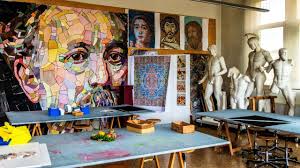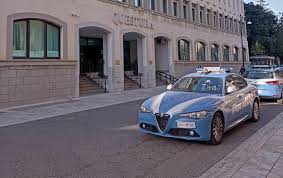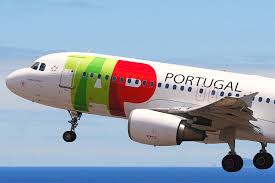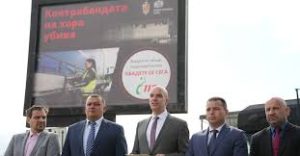Italy: Augusta University artist to have work displayed in Venice

Rome: When discussing art, all the big names may come to mind — Monet, Van Gogh, Rembrandt, and the list goes on. But modern art is a bit less familiar and not at all traditional, especially the medium being used to create it.
For Marianna Williams, assistant professor in new media at Pamplin College of Arts, Humanities and Social Sciences, that’s her specialty.
This summer, one of Williams’ exhibits is on display at what she calls the “Super Bowl of the art world,” the 59th Venice Biennale. It’s something that’s been in the works for a few years.
“It’s a multi-year process. People from the European Cultural Center in Venice reached out to me in 2019 about being in a group show and the art Biennial,” said Williams. “This project has been the largest exhibition I’ve ever done in my career, and raised over $40,000 in grants to fund it, produce it, and ship it, and it’s been a major work of love.”
The pandemic actually delayed the exhibit, but Williams said that may have helped, seeing as she’s been working with the curators for a few years to get it all set up. The exhibition opens April 23 and will be on display until Nov. 6.
The exhibit she has sent includes large-format drawings that have been cut into aluminum, a video that includes environmental imagery layered in with paintings that create a mixed media animation and a powder-coated steel basin that will be filled with water. The basin looks like a big black cube at first, but viewers walking past it will make the surface of the water reverberate.
While she’s excited for the exhibit, she’s also looking to the future.
“I just want to continue making work and to approach any opportunity to build a project. Funding supports my ability to source materials, coordinate shipping and to maintain my studio process. To continually look toward making the next project and keep the ball rolling is good for me. I haven’t really been celebrating at all because I’ve been just working a lot,” said Williams.
Being selected for this exhibit is driving her more. “I don’t think it’s good to get comfortable, especially as a visual artist. My job is to interpret the world and translate it and spit it back out. So if I get too comfortable I won’t have any tension that I need to make art.”
Williams grew up in Augusta and went to school at Augusta Prep. There are several artists, musicians and makers in her family. She went to Rhode Island School of Design and took some courses at Brown University. She then went to the University of Pennsylvania for graduate school.
It was at a young age she became hooked on art. “The South is a storytelling culture, at least in my family. They told a lot of stories growing up. I look at art as a way where we’re looking at these stories that are metaphors for the way we live our lives. From an early age I thought maybe there’s just a bigger framework out there that’s beyond picturing one thing. That’s what got me interested in art and especially new media art, because art is a language for representing our lives.”
Marianna Williams flies a kite with a camera attached to it off a boat in the Arctic Circle.
Williams is a world traveler and was a member of the Arctic Circle Residency program. During her residency, she was looking to expand her art practice by developing video and sound works to document the world north of everything, all the while telling a story.
Not only did she want to see new things, but she also wanted to hear them in a different way. She put a microphone on a glacier to hear what it sounded like inside and used hydrophones to document underwater elements. She even put cameras on kites to sail around buildings and on the mast of the ship as she experimented with new media.
Williams had an installation in Los Angeles that involved a large-format video board on a hand-built structure that was 20 feet tall.
“I use a lot of different materials in my practice, but I think that’s because every time I’m looking at the same issues, I’m looking at environmental impacts and I’m looking at how our personal lives relate to these bigger systems. I am interested in storytelling and the journeys we take to find ourselves,” said Williams.
She’s big on interaction with her work. In 2019, she took part in the Westobou Festival in Augusta and had paintings on the wall of a box truck. In the corner, there was an infrared sensor that scanned a person’s body movement back into a computer program Williams had written. Then, it would redraw the person onto the wall of the painting.
Williams is dispelling the stereotype of the “artist” with every chance she can get.
“I write computer software myself and I know a lot of younger contemporary artists who are super good with it,” she said.
She uses a sports analogy with her students to show modern art isn’t just about the end creation.
“I try to tell my students we can have fun and be expressive, but I think a successful art practice is really disciplined and almost like playing sports. You have to train so much that when you go to play the game, it looks effortless. But behind the scenes, you’re probably on the phone a lot, applying for stuff, writing stuff, making sure the studio budget works.”
At 31 years old, Williams’ career is on a fast track and she gives Augusta University credit for believing in her, especially for the Venice project.
“I got so much support from Augusta University. They really trusted me to do this work and they backed this really experimental project and I think if AU hadn’t really been here, this project would not have been possible.”





